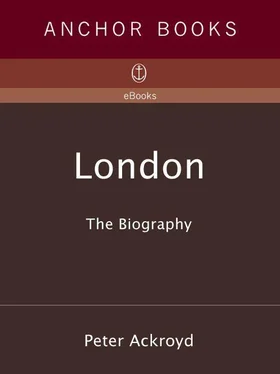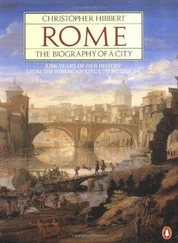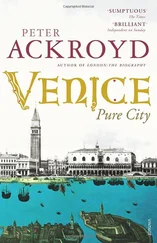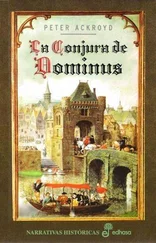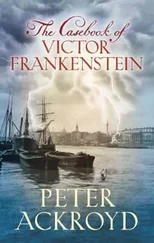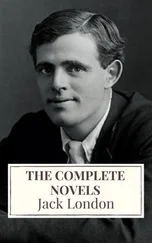Peter Ackroyd - London - The Biography
Здесь есть возможность читать онлайн «Peter Ackroyd - London - The Biography» весь текст электронной книги совершенно бесплатно (целиком полную версию без сокращений). В некоторых случаях можно слушать аудио, скачать через торрент в формате fb2 и присутствует краткое содержание. Год выпуска: 2000, ISBN: 2000, Жанр: Биографии и Мемуары, на английском языке. Описание произведения, (предисловие) а так же отзывы посетителей доступны на портале библиотеки ЛибКат.
- Название:London: The Biography
- Автор:
- Жанр:
- Год:2000
- ISBN:9781400075515
- Рейтинг книги:5 / 5. Голосов: 1
-
Избранное:Добавить в избранное
- Отзывы:
-
Ваша оценка:
- 100
- 1
- 2
- 3
- 4
- 5
London: The Biography: краткое содержание, описание и аннотация
Предлагаем к чтению аннотацию, описание, краткое содержание или предисловие (зависит от того, что написал сам автор книги «London: The Biography»). Если вы не нашли необходимую информацию о книге — напишите в комментариях, мы постараемся отыскать её.
London: The Biography — читать онлайн бесплатно полную книгу (весь текст) целиком
Ниже представлен текст книги, разбитый по страницам. Система сохранения места последней прочитанной страницы, позволяет с удобством читать онлайн бесплатно книгу «London: The Biography», без необходимости каждый раз заново искать на чём Вы остановились. Поставьте закладку, и сможете в любой момент перейти на страницу, на которой закончили чтение.
Интервал:
Закладка:
London is based upon power, therefore. It is a place of execution and oppression, where the poor have always outnumbered the rich. Many terrible judgements of fire and death have visited it. Barely a decade after its foundation a great fire of London utterly destroyed its buildings. In AD 60 Boudicca and her tribal army laid waste the city with flame and sword, wreaking vengeance upon those who were trying to sell the women and children of the Iceni as slaves. It is the first token of the city’s appetite for human lives. The evidence of Boudicca’s destruction is to be found in a red level of oxidised iron among a layer of burnt clay, wood and ash. Red is London’s colour, a sign of fire and devastation.
There was at least one other tribal attack upon the Roman city, at the end of the third century, but by that time the city and its defences were strong. Immediately after the Boudiccan assault the work of rebuilding was begun. If you were to stand now at the great crossroads in the City, where Gracechurch Street divides Lombard Street from Fenchurch Street, you would be facing the main entrance of the Romans’ public forum, with shops and stalls and workshops on either side. The new forum was constructed of ragstone from Kent, carried by boat up the Medway, and, with its plastered surfaces and its roofs of red tiles, was a small fragment of Rome placed upon an alien soil.
Yet the influence of Roman civilisation was enduring in more than one respect. The chief cashier’s office in the eighteenth-century Bank of England was based upon the design of a Roman temple, very like the basilica situated to the left of the early forum. Throughout the centuries London has been celebrated or denounced as a new Rome-corrupt or mighty, according to taste-and it can safely be said that part of its identity was created by its first builders.
London began to grow and flourish . A greater forum, and a greater basilica, were built upon the same site in the late first century; the basilica itself was larger than St. Paul’s, Wren’s seventeenth-century cathedral on Ludgate Hill. A great fort was built to the north-west, where the Barbican now stands. There were public baths, and temples, and shops, and stalls; there was an amphitheatre where the Guildhall now rests, and just south of St. Paul’s a racing arena: by the strange alchemy of the city a name, Knightrider Street, has survived for almost two thousand years.
We can find evidence of further survival in the line, if not the name, of other streets. At the corner of Ironmonger Lane and Prudent Passage, traces of a Roman road passing from east to west have been uncovered together with the alignment of structures against it; at least seven successive buildings, all apparently engaged in the same kind of industrial activity, were erected upon that same alignment. There was an interval of destruction caused by fire, and then a gap of some five hundred years, until new buildings were erected upon the base of the old Roman road in the early ninth century. By the twelfth century, when the name of Ironmonger Lane enters recorded history, the buildings still followed the northern edge of the street laid out more than a thousand years before. The same buildings were in use until the seventeenth century, providing evidence of perhaps unequalled continuity in the life of the city.
We can cite many of the ancient streets in this vicinity-Milk Street, Wood Street, Aldermanbury among them-as the visible remnants of a Roman street horizon. It is suggestive, also, that the great markets of London at Cheapside and East Cheap lay until recent years on the thoroughfares established by the Romans on their first arrival. In the space of fifty years, by the end of the first century, London had acquired its destiny. It became the administrative and political capital of the country as well as its trading centre. The focus of communication and commercial activity, it was governed by imperial laws concerning trade, marriage and defence, laws that survived the passing of the Romans themselves. It was in all essentials a city-state with its own independent government, albeit in direct relationship to Rome; that independence, and autonomy, will be found to mark much of its subsequent history.
During the strongest period of its growth, at the end of the first century, the city would have possessed some thirty thousand inhabitants. There were soldiers, and merchants, and businessmen, artisans and artists, Celts and Romans, all mingled together. There were grand houses for the wealthier merchants and administrators, but the standard house of most Londoners was a form of cubicle or bed-sitting-room, its walls painted or decorated with mosaic. Sometimes, we can even hear the people speak.
There are surviving letters dealing with matters of finance and of trade, as might be expected, but there are also less formal communications. “Primus has made ten tiles. Enough! … Austalis has been taking off on his own every day for the last fortnight … for shame! … London, next door to the temple of Isis … Clementinus fashioned this tile.” These are the earliest known words of a Londoner, scratched upon pieces of tile or pottery and fortuitously preserved among all the ruins that have been heaped over the city’s earth. More pious memorials have also been found, with inscriptions for the dead and invocations to the gods. The stamps for the labels of an optician have been uncovered, proffering remedies for running eyes, for inflammation and for dim sight.
Our own sight of the past may be cleared a little if we are able to reconstruct the scattered evidence of the remains. A great hand of bronze, thirteen inches long, was found beneath Thames Street; a head of the Emperor Hadrian, again more than life-size, in the waters of the Thames itself. So we may imagine a city adorned with great statues. Fragments of a triumphal arch have been recovered, together with stone frescoes of goddesses and gods. This is a city of temples and monumental architecture. There were public baths also, and one lay in North Audley Street quite a long way outside the City. When workmen of the late nineteenth century discovered it in an underground arched chamber, it was still half-filled with water. Votive statues and daggers, sacred urns and silver ingots, swords and coins and altars, all express the spirit of a city in which trade and violence were not divorced from a genuine religious spirit. But there is significance, also, in the smallest detail. More than a hundred styli have been found at the bottom of the Walbrook River, where countless busy clerks simply threw used pens out of the window. It is an image of bustling life which would not be inappropriate in any period of London’s history.
Yet the security and prosperity of London are not at this early date so certain. Like an organic being London grew and developed outwards, always seeking to incorporate new territory, but it also suffered periods of weariness and enervation when the spirit of the place hid its head. We may find tokens of just such a change by those same eastern banks of the Walbrook where the clerks of the empire tossed their pens into the water. Here was discovered, in 1954, the remains of a temple devoted to Mithras and subsequently to other pagan deities. It was not uncommon for Roman Londoners to embrace a variety of faiths; there is good evidence, for example, that the beliefs of the original Celtic tribes were incorporated into a peculiar Romano-Celtic form of worship. But the Mithraic mystery cult, with its rites of initiation and the secrets of its arcane ritual, seems at least in theory to presage a more disturbed and anxious city.
The most resourceful period of Roman London lay in the years spanning the first and second centuries, but these were followed by an uneven period combining development and decline. That decline was in part associated with the two great titular spirits of London, fire and plague, but there was also a steady alteration of imperial rule as the empire itself weakened and decayed. In approximately AD 200, some fifty years before the temple of Mithras was erected, the great wall was constructed around London. It speaks of an age of anxiety, but the very fact of its erection suggests that the city still had formidable resources of its own. Large areas within the wall were unoccupied, or used for pasture, but there were fine temples and houses in the more fashionable district close to the river. The first London mint was established in the third century, testifying once again to the city’s true nature. In that century, too, a riverine wall was constructed to complete the city’s defences.
Читать дальшеИнтервал:
Закладка:
Похожие книги на «London: The Biography»
Представляем Вашему вниманию похожие книги на «London: The Biography» списком для выбора. Мы отобрали схожую по названию и смыслу литературу в надежде предоставить читателям больше вариантов отыскать новые, интересные, ещё непрочитанные произведения.
Обсуждение, отзывы о книге «London: The Biography» и просто собственные мнения читателей. Оставьте ваши комментарии, напишите, что Вы думаете о произведении, его смысле или главных героях. Укажите что конкретно понравилось, а что нет, и почему Вы так считаете.
